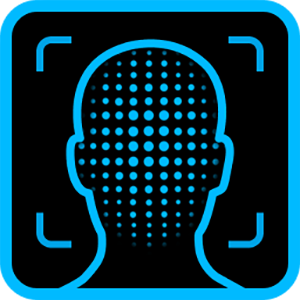FaceMe TimeClock: Combining Facial Recognition with Attendance Systems in the Workplace
Utilizing a facial recognition timeclock enables employers to record employee time and attendance quickly and accurately through biometric verification. This system not only provides managers with detailed reports on their employees’ hours through an intuitive online dashboard, but also gives employers a smart office system powered by facial recognition technology - capable of verifying faces that might be partially obstructed by safety gear, like masks, safety goggles or headwear.
In this article, we’ll discuss everything you need to know about using and deploying a facial recognition timeclock, including benefits, how it works, and use cases.
What is a Facial Recognition TimeClock?
A facial recognition timeclock is a more efficient and modern solution, designed to address the issue of tracking employee timekeeping. Instead of using punch cards, AI-powered facial recognition cameras record employee arrival and departure. Moreover, the information from the facial recognition timeclock can easily be integrated with payroll departments, office managers, and smart office systems.
What are the Benefits of a Facial Recognition TimeClock?
A digital transformation of your timekeeping system will deliver a multitude of benefits. You can find a summary of the most immediately noticeable advantages of a facial recognition timeclock below.
- Fast
Modern facial recognition systems are fast, and a timeclock driven by facial recognition can minimize or eliminate employee congestion at the entrances / exits. Facial recognition biometrics systems can be scaled (with high quality cameras and powerful servers) to recognize multiple personnel, while in motion, several meters before they reach a door. Also, employees won’t have to fumble for an ID or paraphernalia such as a keycard during clock-in/out. - Accurate
Facial recognition time and attendance systems provide nearly 100% accuracy in identity verification. This can also avoid buddy punching or misuse of lost keycards and fobs, or stolen / forgotten passwords. - Adaptable across broad environments and conditions
Where business entry points are particularly busy, creating bottlenecks in the flow of the workforce, facial recognition access control and timeclocks are fast and adaptable. Fast face scanning cameras, using technology such as multiple sensors / lenses for 3D imaging, time-of-flight (ToF) cameras, and IR cameras can be deployed to help speed the face recognition process, even in low-light areas. Moreover, the best installations can facilitate the face scanning of multiple individuals simultaneously, in motion – eliminating delays caused by timekeeping infrastructure.
This performance scalability makes facial recognition timeclock deployments a popular choice in a diverse array of businesses and industries, some of which will feature personnel regularly wearing masks and other protective gear (medical, manufacturing etc). - Streamlined attendance records
As facial recognition timeclock systems use computer processing, they can easily store and chart the timekeeping of individual employees. Turnkey facial recognition timekeeping systems can generate summary reports for managers where employee attendance records can be checked. For example, FaceMe TimeClock offers powerful filters within the UI, allowing managers to search for faces or data using variables such as date, department, or status to find an employee. You may also export .CSV data files for processing in heavyweight database or charting applications. - Improved security
AI-powered access control and timekeeping systems are highly accurate and operate 24/7. This means lower operational costs while boosting the quality of security within an organization. It is also possible to set up custom alerts based-on facial recognition trigger events to lower response times and enhance the efficiency of on-site security management. - Smart office integration
When employees (or visitors) are recognized by a computer connected timekeeping system, data can be relayed to smart office systems within the business. This data can be used to assign office / business resources depending on attendance, such as allocating meeting rooms.
Factors to Consider Before Implementing a Facial Recognition TimeClock
Introducing a facial recognition timeclock into workplaces may be a completely new experience, but there is no need to be intimidated by the process. To assist, we have a list of factors to consider prior to starting your planning process.
- Facial recognition accuracy and features
Facial recognition accuracy and features are pivotal factors to consider when choosing the best facial recognition software. Look for accuracy, processing speed and anti-spoofing performance claims made by facial recognition solution vendors that have been verified by third parties, regulators, or governmental institutions.
User Privacy Concerns
User privacy concerns are perhaps the most significant contributing factor hindering businesses from adopting facial recognition technology. Concerns range from consent, storage of facial data, and identity theft.
To address these concerns, it’s recommended to look for facial recognition software that complies with GDPR or other regional user privacy laws. For example, CyberLink’s FaceMe offers active and passive facial recognition in compliance with consent-based regulations, and its AI-powered engine doesn’t rely on stored facial imagery – rather it references biometric data derived from facial vector measurements.
User concerns about ID theft are also unfounded, as products like FaceMe have passed strenuous and sustained 2D and 3D likeness presentation attack attempts (anti-spoofing), overseen by an independent standards organization, offering flawless performance. - Hardware compatibilities
Your business might already have the necessary hardware for facial recognition engine-based access control and timeclock functionality. These may include CCTVs, video management systems (VMS), and edge devices. Additionally, some facial recognition software supports streamlined integration with your existing VMS, which may further reduce your installation costs. - Costs
System cost also plays an important role in your facial recognition deployment decision. If your organization needs a larger and higher performance facial recognition timeclock system it will typically cost more. Some common expenses may include set up costs, servicing, maintenance, obsolescence, replacement cycles, and software / cloud service subscriptions. - Scalability
Lastly, facial recognition search technology is quite forgiving in that it is usually easy to scale up later with more/better cameras, and/or more powerful computer processing, if required. Good planning will be rewarded, but small errors in implementation decisions won’t usually be disastrous.
Smart Offices and Facial Recognition Technology
As personnel are one of the most important resources of any business, facial recognition technology is a great addition to smart office planning, office procedures, and business optimizations.
Case Study: FaceMe for Bitkey Office Access Control
Founded in 2018, Bitkey Inc. is a Japanese digital key platform company and successful high-tech startup that provides smart lock, smart access, and security solutions for homes and buildings. Bitkey first partnered with CyberLink FaceMe to allow its customers to gain secure access to their apartment homesin Tokyo. This system allows residents to use facial recognition technology for home entry, instead of the less convenient and easily stolen alternatives such as keys, fobs, and security cards.
After the first successful deployment, Bitkey integrated the same underlying AI-powered biometric technology to develop an authentication and access control systems for smart office.
The solution uses the FaceMe facial recognition engine to provide comprehensive access control to anyone visiting the company’s offices:
- to eliminate time-consuming check-in and check-out processes for employees and visitors.
- to cut down on the requirement for personnel to escort visitors to their destinations.
- to automatically assign and schedule meeting rooms based on availability and suitability.
Bitkey’s implementation streamlines visitors’ end-to-end experience at each step:
- Each visitor receives an email invitation with an enrollment QR code.
- On the scheduled date, the visitor scans their QR code at a building entrance kiosk to enroll their facial biometric ID.
- Monitors equipped with cameras and facial recognition search capabilities are located at each door, corridor, and elevator. Interactive directions guide the unescorted visitor to their assigned meeting room, unlocking doors and granting elevator access as needed.
The Future of Work: Facial Recognition TimeClocks
Facial recognition timeclocks are a great step forward for any business undergoing digital transformation. This modern way for employees to check-in and out of the business is part of the future of work, and is far slicker, more secure, and more flexible than traditional timeclocks.
FaceMe TimeClock runs across platforms, on varied cloud and edge configurations, and on a wide range of hardware components. The system offers a browser-based dashboard and report exporting function with one mouse click. HR admins can easily add or delete employees’ information, check attendance records, and ensure correct salary calculation. In some cases, all it takes is to install the software on an existing PC or workstation and connect to the security IP cameras. When new hardware or cameras are needed, the investment is often minimal in comparison to the benefits of using facial recognition to record time and attendance.

FAQ
Compared with available and viable alternatives in the 2020s, facial recognition is emerging as the best all-round biometric identity verification solution as it is accurate, fast, flexible, affordable, and hygienic.







